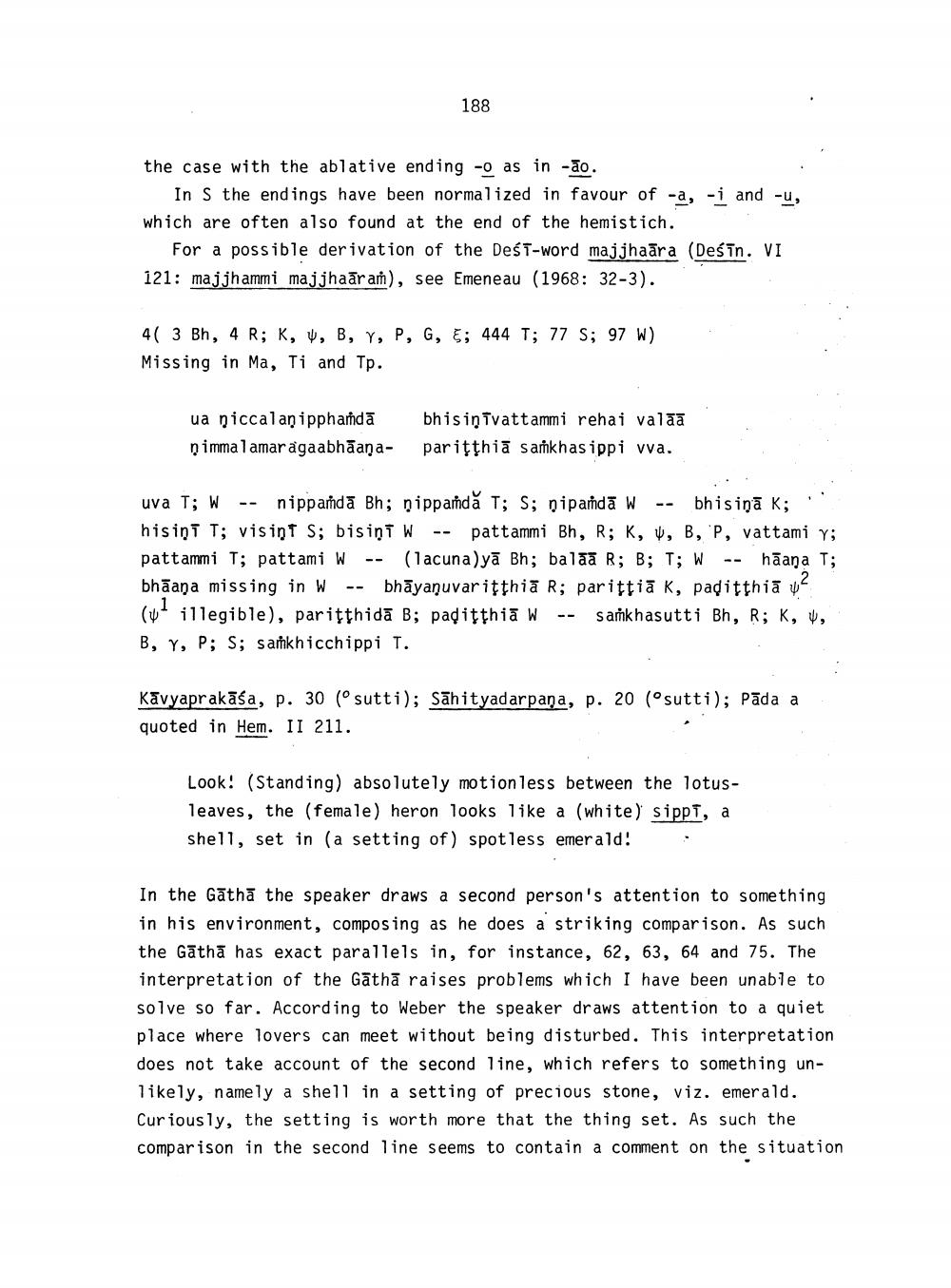________________
188
the case with the ablative ending -o as in -ão.
In S the endings have been normalized in favour of -a, -i and -u, which are often also found at the end of the hemistich.
For a possible derivation of the Dest-word majjhaāra (Deśīn. VI 121: majjhammi majjhaāra), see Emeneau (1968: 32-3).
4( 3 Bh, 4 R; K, W, B, Y, P, G, 5; 444 T; 77 S; 97 W) Missing in Ma, Ti and Tp.
ua niccalanipphamdā nimmalamar agaabhāana-
bhisiņTvattammi rehai valāā pariţthiā sarkhasippi wa.
uva T; W -- nippada Bh; nippandă T; S; pipaņdā w -- bhisinā K;.. hisint T; visint S; bisiņt W -- pattammi Bh, R; K, 4, B, 'P, vattami Y; pattammi T; pattami W -- (lacuna)yā Bh; balaa R; B; T; W -- hāana T; bhāana missing in W -- bhāyaṇuvariţthia R; parittiā k, padithi ya (vt illegible), pariţthidā B; padiţthia W -- samkhasutti Bh, R; K, , B, Y, P; S; saṁkhicchippi T.
Kavyaprakāśa, p. 30 (sutti); Sāhityadarpana, p. 20 (osutti); Pāda a quoted in Hem. II 211.
Look! (Standing) absolutely motionless between the lotusleaves, the (female) heron looks like a (white) sippi, a shell, set in (a setting of) spotless emerald: ::
In the Gathā the speaker draws a second person's attention to something in his environment, composing as he does a striking comparison. As such the Gathā has exact parallels in, for instance, 62, 63, 64 and 75. The interpretation of the Gathā raises problems which I have been unable to solve so far. According to Weber the speaker draws attention to a quiet place where lovers can meet without being disturbed. This interpretation does not take account of the second line, which refers to something unlikely, namely a shell in a setting of precious stone, viz. emerald. Curiously, the setting is worth more that the thing set. As such the comparison in the second line seems to contain a comment on the situation




